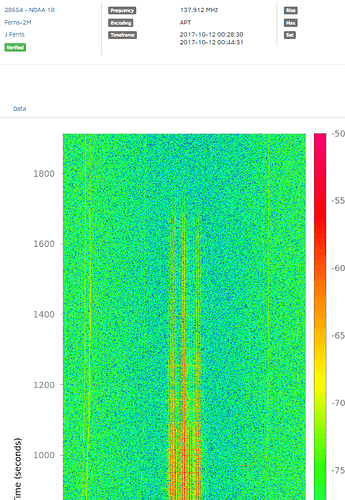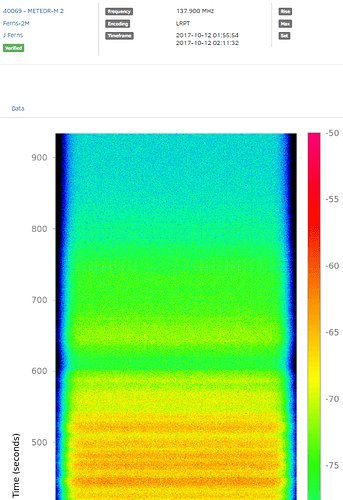Looks Like default settings rather than user configurable gain settings used in satnogs_noaa_apt_decoder.py
self.osmosdr_source_0.set_gain(satnogs.hw_rx_settings[rx_sdr_device]['rf_gain'], 0)
self.osmosdr_source_0.set_if_gain(satnogs.hw_rx_settings[rx_sdr_device]['if_gain'], 0)
self.osmosdr_source_0.set_bb_gain(satnogs.hw_rx_settings[rx_sdr_device]['bb_gain'], 0)
self.osmosdr_source_0.set_antenna(satnogs.hw_rx_settings[rx_sdr_device]['antenna'], 0)
EDIT:
self.osmosdr_source_0.set_gain(satnogs.handle_rx_rf_gain(rx_sdr_device, rf_gain), 0)
self.osmosdr_source_0.set_if_gain(satnogs.handle_rx_if_gain(rx_sdr_device, if_gain), 0)
self.osmosdr_source_0.set_bb_gain(satnogs.handle_rx_bb_gain(rx_sdr_device, bb_gain), 0)
self.osmosdr_source_0.set_antenna(satnogs.handle_rx_antenna(rx_sdr_device, antenna), 0)
Maybe I do not understand this code so well.
It could explain why I see different backgrounds in waterfalls between NOAA passes and Meteor at similar frequencies.

